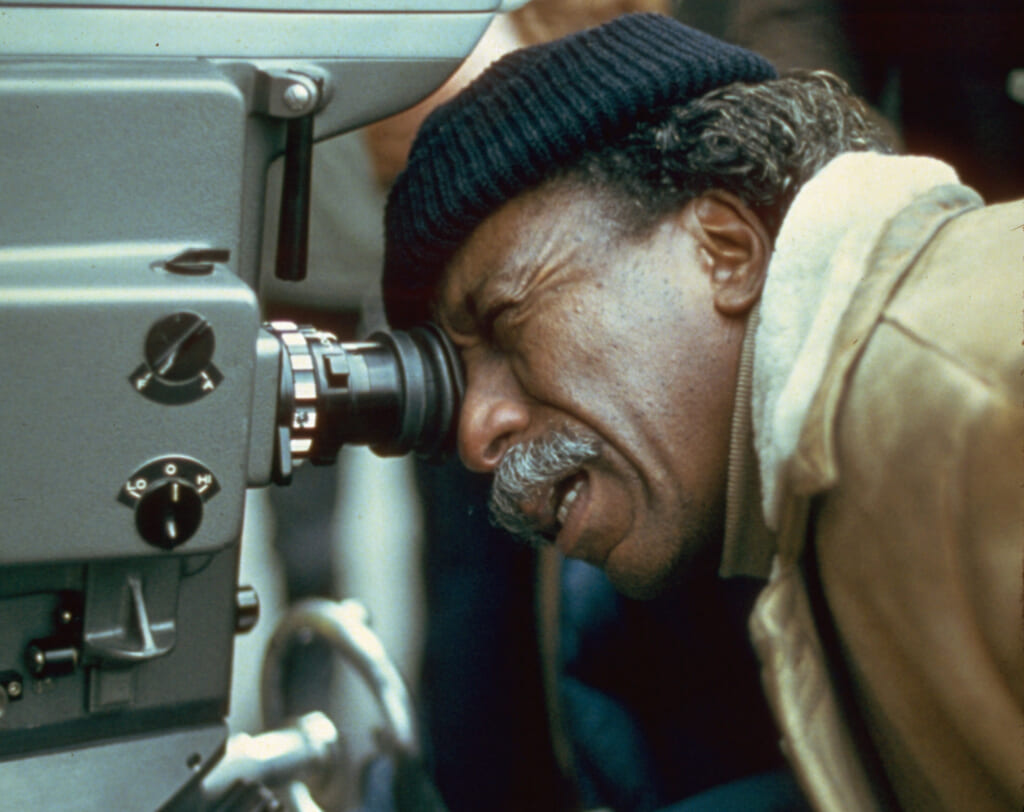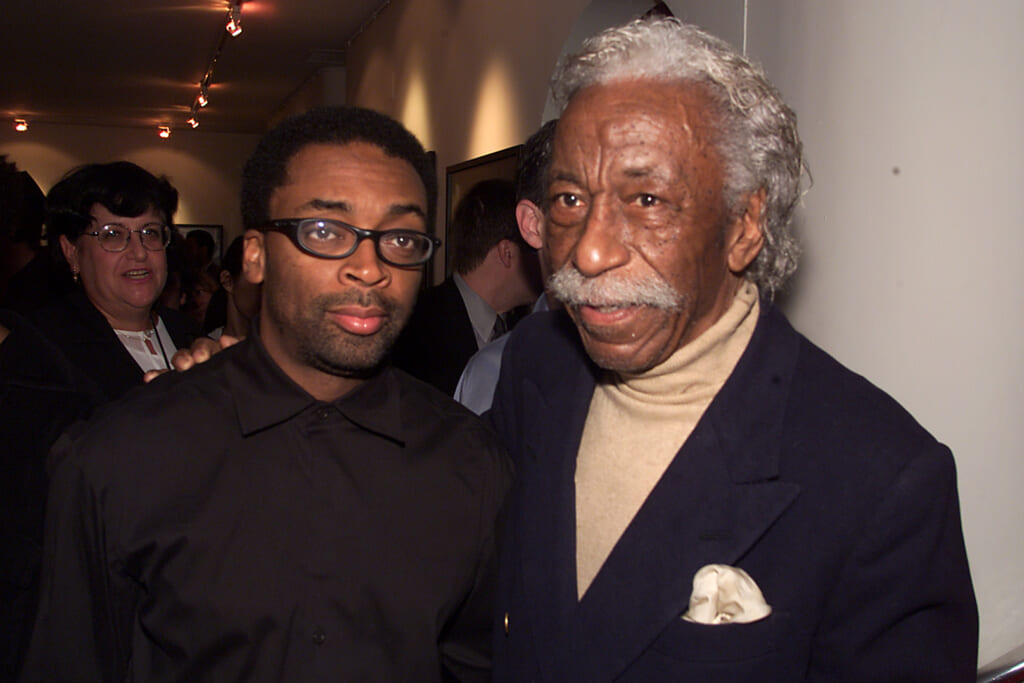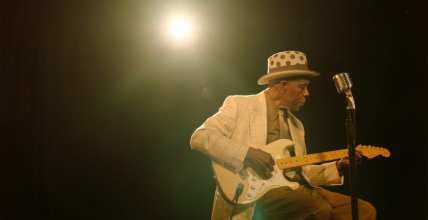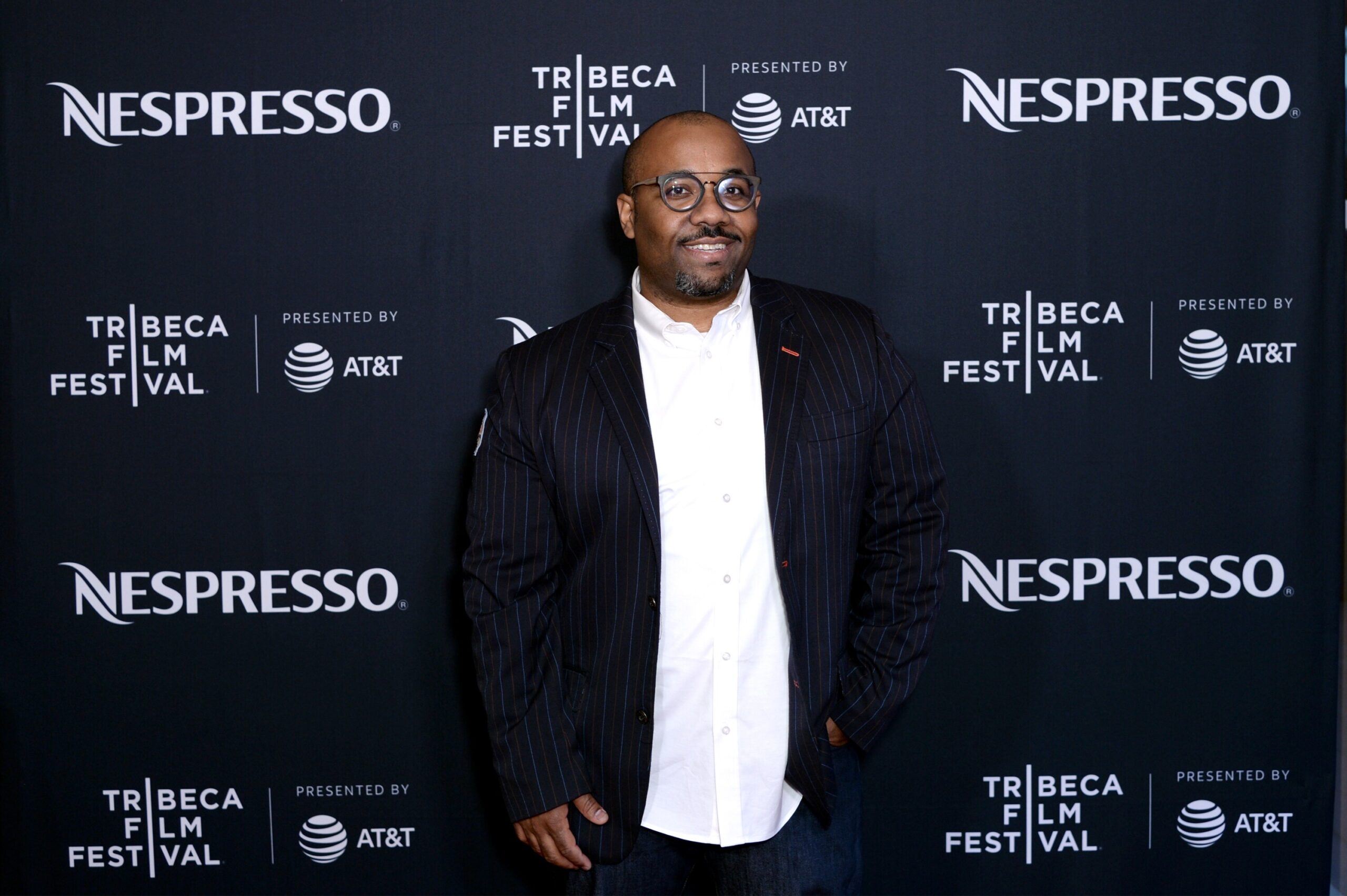Tribeca Festival 2021: ‘A Choice of Weapons: Inspired by Gordon Parks’ and honoring the Black gaze
REVIEW: While there are times when A Choice of Weapons seems at odds with itself, it also accentuates the challenge of telling the story of a figure through your eyes and admiration for him
There’s a tiny detail in Gordon Parks’ gorgeous—and heavily repurposed—photo of a woman and her niece standing below a neon “Colored Entrance” sign at a theater in elegant dresses that is rarely mentioned. The strap on Joanne Thornton Wilson’s slip is dangling off her shoulder and exposed beneath her short sleeve.
It may seem like an insignificant element in a work that captures the crucial issue of segregation in 1956 Alabama, but any Black woman who’s walked the South in any era knows that the utmost value is placed on dignity and appearance, including in the face of adversity.
This came to mind when watching director John Maggio’s A Choice of Weapons: Inspired by Gordon Parks, which highlights this image along with many others by the masterful artist, who was the first Black staff photographer of Life magazine. Through interviews with his contemporaries and other notable figures inspired by his work (including LaToya Ruby Frazier, Nelson George and Spike Lee)—it’s revealed that Wilson was a bit disappointed that she didn’t realize her slip was showing in the now iconic snapshot.
“I was a proud Black woman in Alabama, and I never left my house without being dressed perfectly,” she’s quoted as saying in the film.

But Parks, whose voice is occasionally heard through interview clips throughout the documentary, wanted to do what anyone with a camera should: capture the humanity of the subject. Segregated entrances, as cruel and inhumane as they were, were ubiquitous at the time and represented the institution of racism.
Wilson’s fashion faux pas in an otherwise immaculate statement on Black beauty and decorum, and consequently her reaction to it, allows the image to show the person within it, something that is too often missing in myriad depictions that push strife to the foreground instead.
A Choice of Weapons discusses several seminal pieces by Parks, all of which highlight sections of humanity a less skilled artist may not even notice. 1956’s “Outside Looking In” shows six children peering through the fence of a segregated park. It could have easily just shown a “whites only” sign or a judgmental white face staring back at them from inside. Instead, the only clear image is of the kids, once again donning pretty clothes, and their desire.
Throughout the film, people like filmmaker Ava Duvernay and Frazier, a photographer who’s documented social issues, including the Flint water crisis, share how they’ve been moved by Parks’ many works. Other contemporary photographers point to Parks as an inspiration for many of today’s provocative #BlackLivesMatter photos that often document Black life in resilience, pain or sometimes both, due to systemic oppression.

New Yorker journalist Jelani Cobb and author Bryan Stevenson contextualize Parks’ oeuvre with the historical, and persistent, racism that further informs each one, while Lee and documentarian Nelson George underscore his impactful Black image as contrary to mainstream depiction. Hence, the title of the film, which in part refers to the type of resistance Parks embodied, supplementary to activists like Malcolm X, who Parks also shot for his remarkable “Black Muslims” pieces in 1963.
Black image as a complex identity existing entirely outside how it’s been depicted by others’ eyes, is arguably the film’s most urgent theme, gratefully swerving away from a lingering motif that implies Parks’ work was often inspired by or in response to whiteness.
A Choice of Weapons also discusses how he desired, and later struggled, to break out of the same box the film narrowly dodges when he set his sights on Hollywood and became the first ever Black person to direct a major motion picture with The Learning Tree in 1968. In 1971, he made the iconic Shaft, an extension of his insistence on highlighting Black humanity above all else by centering an unapologetically Black police offer (Richard Roundtree) in the racist NYPD. In detailing Parks’ vast career, including his photos of Gloria Vanderbilt that underscore his versatility, Maggio also shows the humanity of a man who, as much as he gave us, probably had even more potential than we ever saw.
While there are times when A Choice of Weapons seems at odds with itself, it also accentuates the challenge of telling the story of a figure through your eyes and admiration for him rather than their own words. Maggio manages to not eclipse his subject in his own film, though, he chooses to piece together the footage as part biopic and part examination of his lasting influence. But even in its fullness, it makes you yearn for a more comprehensive narrative on the late photographer.
Have you subscribed to theGrio’s new podcast “Dear Culture”? Download our newest episodes now!
TheGrio is now on Apple TV, Amazon Fire, and Roku. Download theGrio today!


